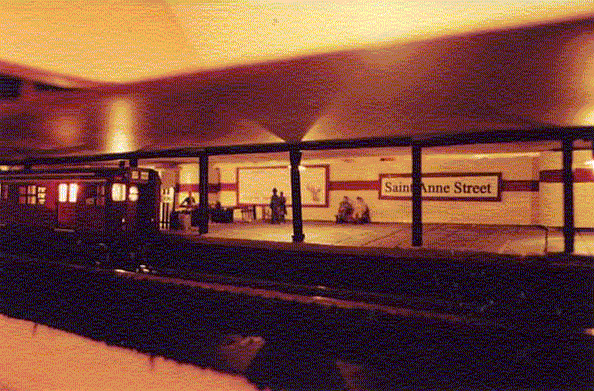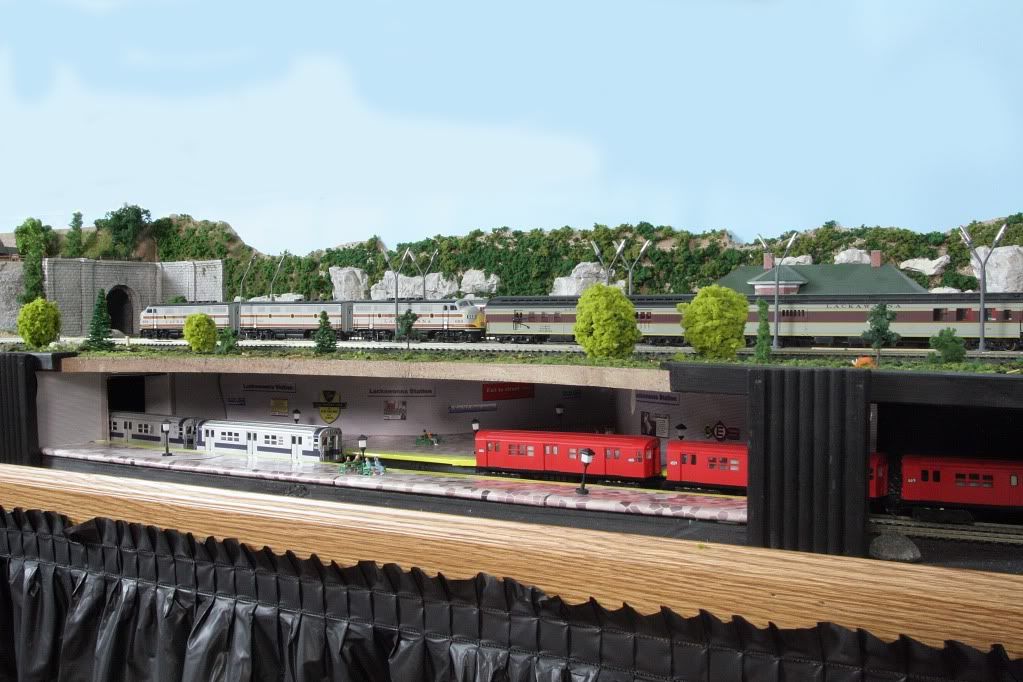hi im new to the website and this is my first post, i have some questions that hopefully someone could help me out with. i currently have a basic simple 4x8 layout with an oval track plan and a few sidings i want to step it up a bit and mess around with an elevated subway. i found that micro engineering makes the city viaduct track but it doesnt seem to list anywhere i look about curved sections or stations. has anyone created and elevated subway track and have any info on where to find good elevated track sections and if anyone has any tips on the building of it, or if theres anything on this website that could help me out, thanks!
[#welcome]to the forums!! Wait for Mr Beasley to chime in - he’s kind of the resident expert on subway stuff! Off the top of my head, I’d say that elevated curves are going to be made up of streight sections, a little wider than your streight line ones, with the track curving through the streight “bridges”. My [2c]
[#welcome] Glad to have you aboard.
Relating this to the Pelham Bay Line of New York’s IRT (or whatever it’s called now - haven’t been there in half a century) the elevated structure was simply a series of parallel deck girder spans, supported on H-columns at about 50-60 foot intervals. The H columns supported a cross beam as deep as the span girders. The track was built to open-floor bridge standards - heavy ties, closely spaced, with guard rails (encrusted with the grease of decades of leaky motor bearings) and boards both between and outside the rails. On curves, the ties remained level. Superelevation was handled with wooden wedges between the tie plates and the regular ties. If the (overrunning) third rail was on the outside of the curve, it, too, was superelevated.
A reasonably believable model could be built using flex track and sliding the ties close together. Mr Beasley has posted photos of this recently in the Beer Barn thread (start at the most recent post and work back.) Atlas deck girder bridge kits could provide the visible girders, while the ones hidden under all the woodwork could be simulated with rectangles of thick styrene or even wood. OTOH, an accurate scale model would be in the realm of the advanced scratchbuilder/4-spike-per-tie tracklayer. The little wedges on every tie would have stopped me dead in my tracks, and I handlay puzzle palace switchwork in HOj.
The 4-car subway train currently available is accurate for the late 40s on. I rode the green-painted version every school day from 1951 through 1955.
Chuck (Modeling Central Japan in September, 1964)
“Elevated Subway” say… isn’t that sort of like “Jumbo Shrimp” ? ? ?
You might go the M.R. or search eBay for some of Eric Bronsky’s “Elevated Traction” articles from the mid-1970s to the mid-1980s…
http://index.mrmag.com/tm.exe?opt=S&sort=A&output=3&cmdtext="BRONSKY%2C+ERIC"
Hi - Welcome aboard. It’s good to have more people modelling subways.
My subways are down underground. I built pretty much everything by hand, including the stations. I bought a single sheet each of “tile” and “sidewalk” patters from Evergreen, the styrene sheet and shape people. I used that to make a latex mold, and then I cast a bunch of “tile” walls and “concrete” platforms using Hydrocal.
This is an old picture (taken with a film camera!) of the Saint Anne Street station. The girders are another Evergreen shape.

This is a shot of the “bridge track” that Chuck mentioned. (It was his suggestion, by the way.) I did this by carefully removing a bunch of ties, cutting off the spacers, and replacing them. This yields about 18 inches of “bridge” track from one 3-foot length of flex track. On this one, incidentally, I pulled the ties from an old piece of brass flex track, providing yet another use for this stuff. The old heavily-tarnished brass rails, by the way, became guard rails on another bridge.
In this month’s MR, there is an ad from Trainworld for several different color schemes of the Proto subway trains. They are $159 a set. The street price on these goes up and down a lot. I’ve got two sets myself, the original “Redbirds” with the silver roof, and the green ones. They’re nice models, and they run great. It’s a piece of cake to add a decoder. I even put a video camera in the front of mine, so I can see what’s going on in the tunnels.
I have the red R-17 subway cars converted to DCC. They run underground and at grade, no elevated… at least not yet.
